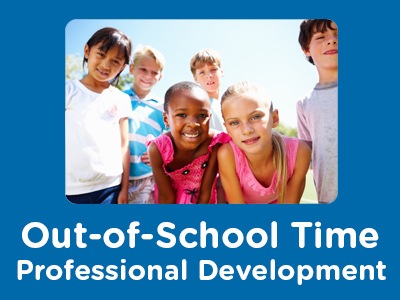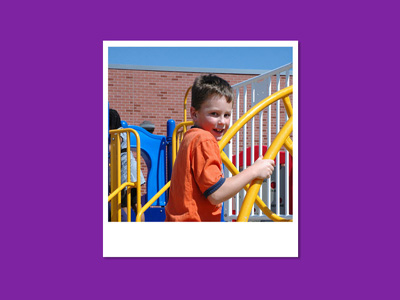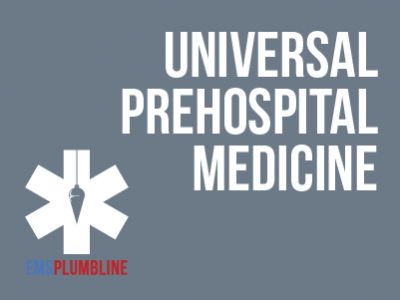 |
Creating and Maintaining Healthy School-Age Environments |
2.00 |
Keeping school-age children healthy is a major priority for school-age programs. This requires giving careful attention to setting up the environment in a way that promotes healthy habits, and using effective strategies for monitoring and maintaining a hygienic environment. Because school-age children are growing towards independence, it is also important to help them develop habits and behaviors for living a healthy life-style. |
 |
Course 14: Creating and Maintaining Healthy School-Age Environments |
2.00 |
Keeping school-age children healthy is another major priority for school-age programs. This requires giving careful attention to setting up the environment in a way that promotes healthy habits and using effective strategies for monitoring and maintaining a hygienic environment. Because school-age children are growing towards independence, it is also important to help them develop habits and behaviors for living a healthy life-style.
|
 |
Creating Respect and Safety for Paraprofessionals |
1.00 |
Keeping school-age children respectful and safe is a major priority for schools. It requires setting up the classroom environment to promote safety and using effective strategies for monitoring and maintaining a safe environment. Because students are growing towards independence, it is also essential to help keep them safe from harm as they participate in school experiences. |
 |
Course 13: Creating and Maintaining Safe School-Age Environments |
2.00 |
Keeping school-age children safe during out-of-school hours is a top priority for school-age programs. This requires giving careful attention to setting up the program environment in a way that promotes safety and using effective strategies for monitoring and maintaining a safe environment. Because school-age children are growing towards independence, it is also important for staff to help them develop habits and behaviors that will keep them safe from harm as they participate in program experiences. Promoting and protecting children’s safety is one of the major responsibilities of staff in school-age programs. |
 |
Creating and Maintaining Safe School-Age Environments |
2.00 |
Keeping school-age children safe during out-of-school hours is a top priority for school-age programs. This requires giving careful attention to setting up the program environment in a way that promotes safety, and using effective strategies for monitoring and maintaining a safe environment. Because school-age children are growing towards independence, it is also important for staff to help them develop habits and behaviors that will keep them safe from harm as they participate in program experiences. Promoting and protecting children's safety is one of the major responsibilities of staff in school-age programs. |
 |
Constructing: Airway Essentials—Part 3 |
1.00 |
Knowing why you are doing what you are doing will almost always produce a better result. In this case, Dr. Christopher Galton explains why we ventilate at the rates and the volumes we do. This insightful discussion will offer ideas on how to use the ventilation tools that we encounter every day. Final Exam: This multiple choice exam is designed to test your knowledge of the material you just reviewed. You have two attempts to gain an 80% or higher on this exam. Please take your time and answer each question carefully. |
 |
Manejo de la Ira (Spanish) Anger Management |
1.00 |
La ira es un conjunto de respuestas físicas, emociones y comportamientos desencadenados por una amenaza o frustración percibida. La ira puede ser dañina o útil, dependiendo de cómo afrontes tu ira y la de los demás. Este curso explorará cómo comprender mejor su enojo y manejar sus respuestas de enojo. También examinará las causas del enojo y las formas de utilizarlo de manera constructiva.
Anger is a set of physical responses, emotions, and behaviors triggered by a perceived threat or frustration. Anger can be harmful or helpful, depending on how you cope with your anger and the anger of others. This course will explore how to understand your anger better and manage your anger responses. You'll also examine the causes of anger and ways to use it constructively.
|
 |
Coaching: Communication (Instructor Guide) |
1.00 |
Language is an important coaching tool. The use of suitable words during coaching will help you create relationships, repair employee confidence, and establish plans for employee success. As a coach, you must select words that directly influence your employees’ attitude, behavior, and performance. The use of appropriate language during your coaching sessions will help you convey your messages in a clear and encouraging manner.
In this course you will learn to: clearly express your message by using appropriate language, identify and use nonverbal methods of communication, and receive the desired information by asking effective questions.
This Instructor's Edition of this course includes notes and suggestions to assist you in presenting the material, whether in an in-person classroom setting or as an instructor-led online or distance-learning course. It also provides you with the answers to questions found in mid-lesson activities, as well as in the quiz that concludes the course. |
 |
Coaching: Communication |
1.00 |
Language is an important coaching tool. The use of suitable words during coaching will help you create relationships, repair employee confidence, and establish plans for employee success. As a coach, you must select words that directly influence your employees’ attitude, behavior, and performance. The use of appropriate language during your coaching sessions will help you convey your messages in a clear and encouraging manner.
In this course you will learn to: clearly express your message by using appropriate language, identify and use nonverbal methods of communication, and receive the desired information by asking effective questions. |
 |
Head Trauma Interviews: Lesson 1 |
1.50 |
Lauren Wittman RN, BSN, CCRN-CMC, sits down to discuss some of the fundamental components of brain and skull Anatomy and Physiology with Jonathan J. Stone, M.D. . As the discussion continues, Dr. Stone offers an in-depth look at what we can expect when secondary trauma to the brain continues to manifest. This valuable information will assist you with understanding your local protocols no matter where you are. Final Exam: This multiple-choice exam is designed to test your knowledge of the material you just reviewed. You have two attempts to gain an 75% or higher on this exam. Please take your time and answer each question carefully. |











